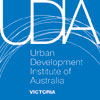The Urban Development
Institute of Australia (Victoria) today called for the establishment of a Housing
Affordability Commission to review all proposals from government affecting land
and housing costs as part of a ten point plan to restore affordable housing in
Victoria.
Executive Director of the UDIA (VIC),
Tony De Domenico said, "The organisation acknowledged the Victorian Government
had taken some steps, such as lowering stamp duty and working to provide certainty
in planning had assisted, however, the depth of the current development industry
problems needed some major game changers."
The plan will be released this morning
following the UDIA major research breakfast where leading property economist Colin
Keane, Director of Research4 Pty Ltd and the National Land Report, is expected
to reveal the average first home buyer is paying on average 30 percent more for
a block of land and getting 36 percent less land than during the height of the
property boom.
Mr De Domenico said, "A Housing
Affordability Commission would require a 'Housing Affordability Impact Statement'
for any proposed changes to guidelines, practice notes, regulations and legislation."
In the last 3-5
years, costs at least $50,000 per lot higher have been imposed, such as:
The Growth Areas Infrastructure Contribution
(around $15-20,000 per lot).
- Up to a tripling
of Developer Contributions (around $8,000 per lot).
- Higher GAA
engineering standards adopted by councils (around $1,000 per lot).
- Biodiversity
offsets for the growling grass frog and the golden sun moth (around $1,000 per
lot), native vegetation offsets (around $4,000 per lot) and creek corridors (around
$3-5,000 per lot).
- Bushfire
overlay costs (around $5,000 per lot).
- Recycled
water requirements (around $4,000 per lot).
- National
Broadband Network (around $1,000 per lot).
- Carbon tax
(an unknown cost).
Mr De Domenico said new home buyers pay these taxes
in their purchase prices, so they are really new home taxes, making home ownership
unachievable for many".
"At present there is an ineffectual
Housing Affordability Unit in DPCD. Replacing it with a Commission, reporting
directly to the Planning Minister, but with a wide mandate over all government
policy, will ensure a cultural change towards lower costs."
Also included in the UDIA 10 Point Plan
-
- Investigate
ways to fund shovel-ready infrastructure, such as state-backed infrastructure
bonds, tax increment financing and public-private-partnerships.
- Establish
a body or empower the GAA to ensure coordinated and timely development, infrastructure,
services and facilities.
- Review the
cumulative impact of recent cost imposts on the development industry. Reform
the GAIC and "developer contributions" so that, combined, they are no
more than $10,000 per lot in Growth Areas.
Media Enquiries:
Ron
Smith, Corporate Media Communications, UDIA (VIC) - Mobile: 0417 329 201

Summary
Urban Development Institute of
Australia (Victoria)
10 Point Plan to Provide Land and
Housing at Affordable Prices
The UDIA's Policy Priorities
- Maintaining
and improving housing affordability
- Increasing
land supply
- Reducing
taxes and charges
- Promoting
environmentally sustainable development
- Providing
fairly funded timely infrastructure
- Planning
system reform
The Plan
1. Restore the First Home Owners Grant,
targeted at new homes and apartments, maintaining the metropolitan/rural split,
and accelerate stamp duty reductions for first home buyers.
2a) Complete structure planning for 50,000
lots by June 2012. Ensure the land is developable, and issue planning permits
and precinct structure plans concurrently.
2b) Establish a body or empower the GAA
to ensure coordinated and timely development, infrastructure, services and facilities.
3. Implement the findings of the Underwood
Review and consult with the industry over draft changes to the Planning and Environment
Act early.
4. Commit to infrastructure projects close
to high population growth areas to promote confidence and employment. Ensure
the Victorian budget funds a programme of infrastructure works that meets demographic
projections.
5. Give the GAA more planning powers to
ensure balanced planning outcomes; remove DSE's ability to veto land use planning
proposals.
6a) Implement code assessable infill development
to allow reasonable development on infill land and lift zone restrictions.
6b) Require local governments to prepare
plans in the next 6 months showing how they will cater for growth in the next
5 years, adopt the plans into the planning scheme then allow development under
the scheme as-of-right. Where councils fail to do so, the state should nominate
the areas.
7. Review the cumulative impact of recent
cost imposts on the development industry. Reform the GAIC and "developer
contributions" so that, combined, they are no more than $10,000 per lot in
Growth Areas.
8. Increase funding to VCAT to reduce
the delay to under 3 months.
9a) Investigate ways to fund shovel-ready
infrastructure, such as state-backed infrastructure bonds, tax increment financing
and public-private-partnerships.
9b) Allocate funds to VicRoads for Growth
Area planning and construction.
10a) Immediately reintroduce a properly
funded Development Facilitation Unit for major developments and establish a "front
door" for the development industry within DPCD.
10b) Establish a Housing Affordability
Commission to review all proposals from government affecting land and housing
costs. Require a Housing Affordability Impact Statement for any proposed
changes to guidelines, practice notes, regulations and legislation.